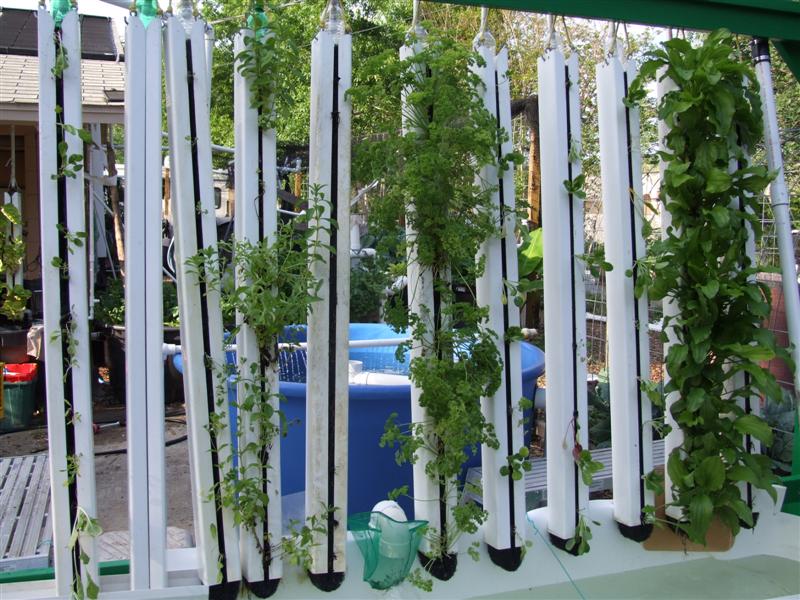Aquaponics and the High Density Vertical Growth (HDVG) Garden
So with the coming food crises, looming energy shortages, or soon to come hyper-inflation causing food prices to skyrocket, people need effective low-cost solutions to grow their own food. To be food independent. One really great potential is High Density Vertical Growth Aquaponics (HDVG). Sounds like something DirecTV charges extra for - but its not.
The HDVG system is designed to grow vegetables and other foods much more efficiently and with greater food value than in agricultural field conditions. The HDVG system demonstrates the following characteristics:
- Produces approximately 20 times the normal production volume for field crops
- Requires 5% of the normal water requirements for field crops
- Can be built on non-arable lands and close to major city markets
- Can work in a variety of environments: urban, suburban, countryside, desert etc.
- Does not use herbicides or pesticides
- Will have very significant operating and capital cost savings over field agriculture
- Will drastically reduce transportation costs to market resulting in further savings, higher quality and fresher foods on delivery, and less transportation pollution
- Will be easily scalable from small to very large food production situations
ZipGrow
Excerpted from: http://www.theaquaponicstore.com/Vertical-Aquaponics-s/77.htm
ZipGrow towers are an
efficient and productive way to grow crops. Most aquaponic producers
utilize rafts for productions, but rafts are not productive enough per
square foot to make production in greenhouses economically feasible.
ZipGrow
towers typically produce 3-4 times more per square foot than
traditional raft production methods. This is due to the light
conservation aspects of the tower design as well as the modular aspects
of the tower design that can utilize conveyor production techniques to
maximize crop yield. By spacing ZipGrow Towers in rows you can not only
maximize crop density but also use light more efficiently than any other
tower system on the market, guaranteed.

How it works
Integrating
ZipGrow towers ino traditional production systems is relatively simple,
requiring only minor changes to greenhouse infrastructure. During this
process, local producers negotiate with local markets to use a ZipGrow
GreenGrocer for in sore produce sales. Producers then move towers to
market, exchanging mature towers with harvested ones, which are cycled
back into production.

An even cheaper solution would be to purchase 6 foot lengths of 4 inch PVC pipe. Then drill 3/4 to 1 inch holes every 6-8 inches (varies according to plant size). Fix the pipe to a flow-through screened base. The screen should be fine enough to hold in small gravel, but coarse enough to allow free flow of growth medium. Then stand it up, fill it with larger gravel in the bottom 8 inches then a pea gravel the rest of the way up. Make sure you stop at each hole to insert your plant. The problem here would be in cleanup and the weight of the system. Obviously a tube filled with a very lightweight open mesh type foam would be much lighter than a gravel medium. But in a pinch the gravel would probably work with some modifications.
http://www.backyardaquaponics.com/forum/
http://www.aquaponiclynx.com/
http://ezgrogarden.com/growing-organic/efficient-and-economical-food-production-systems/
http://theaquaponicsource.com/

No comments:
Post a Comment